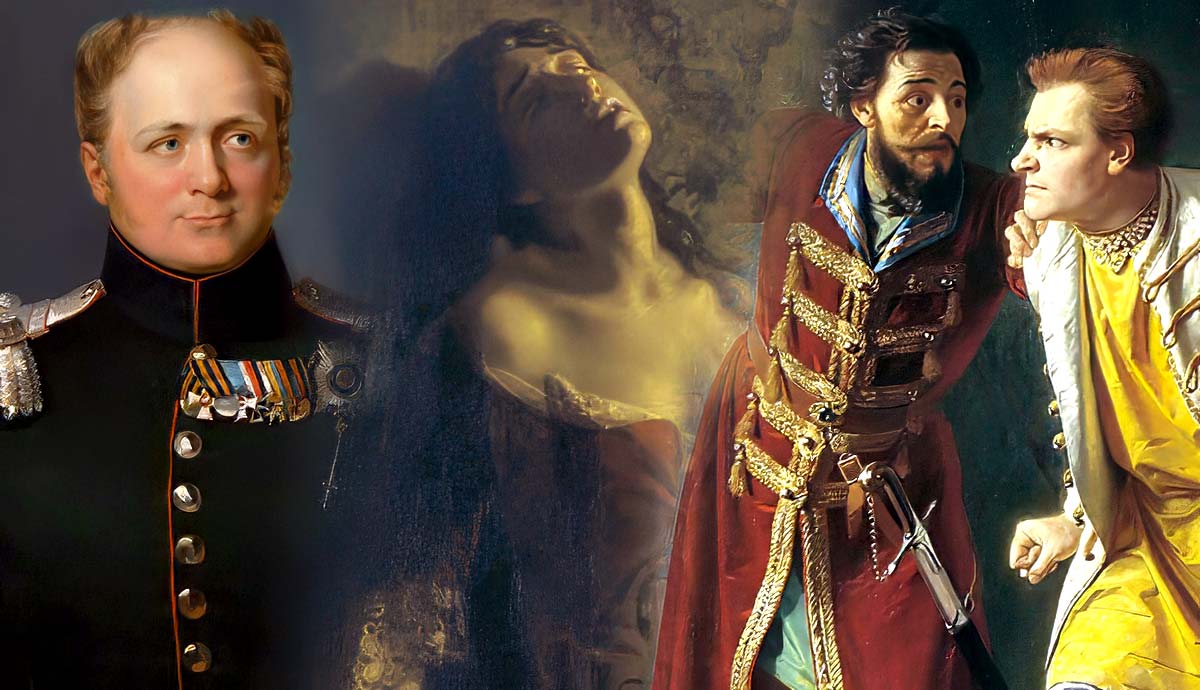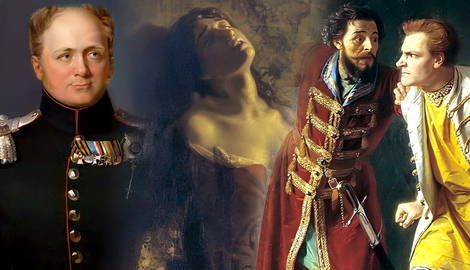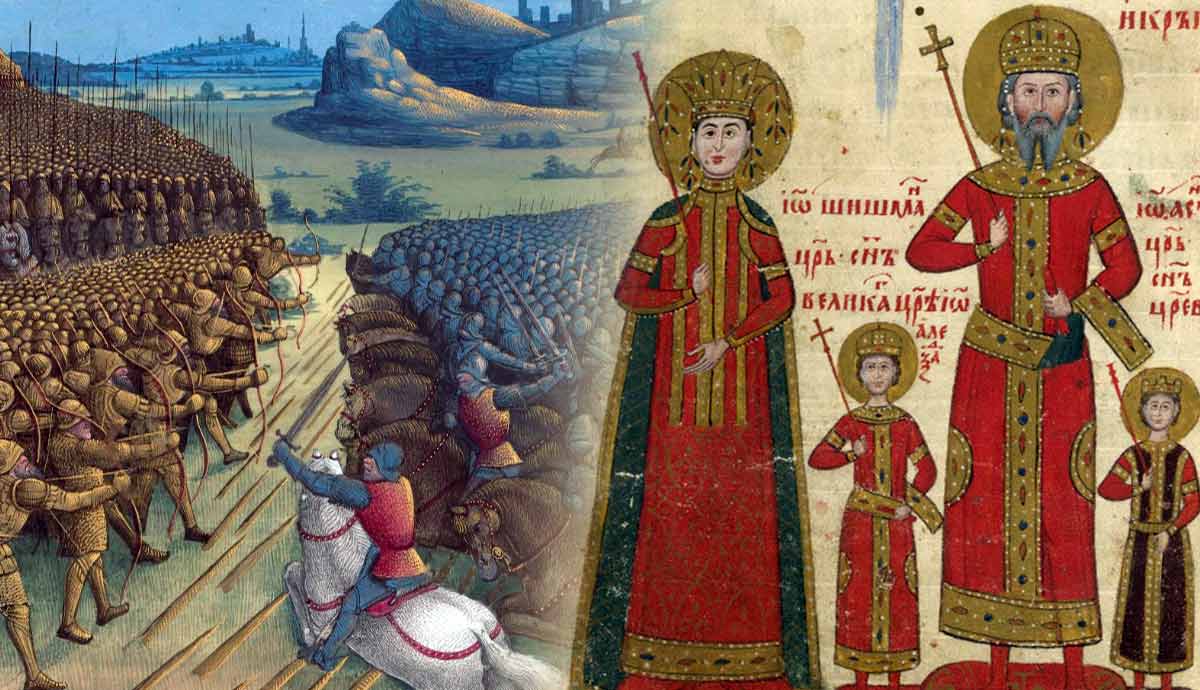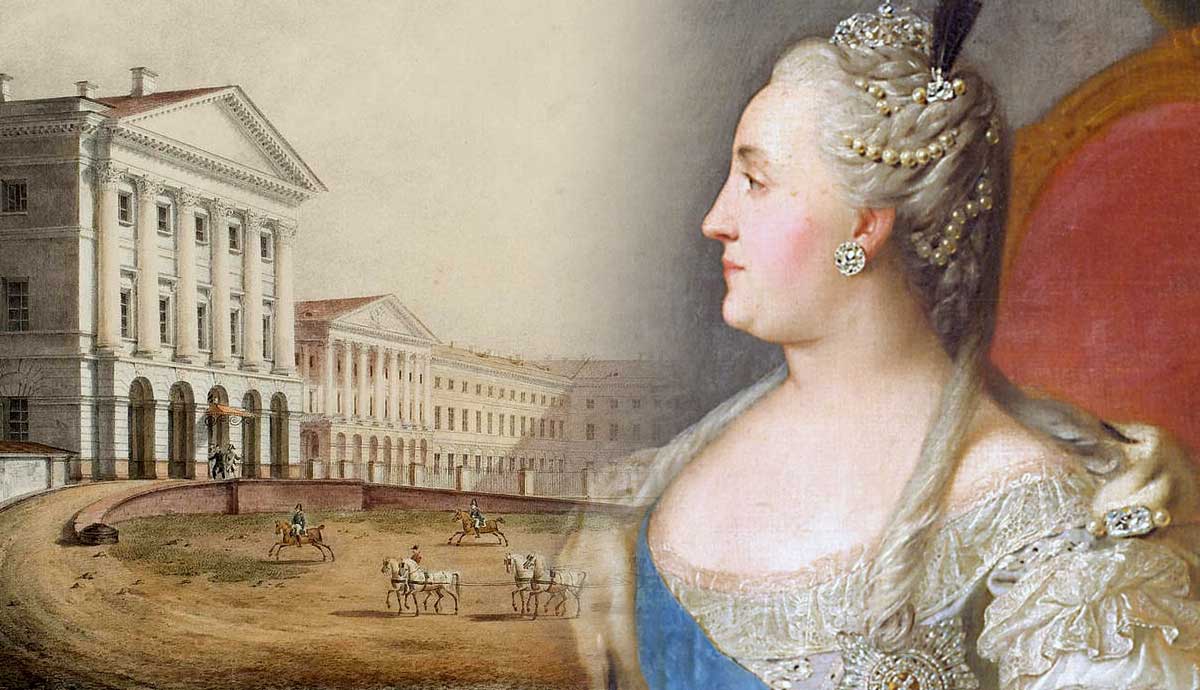f

Throughout Russian history, dozens of individuals have claimed to be members of the ruling family. The following list of pretenders includes two rebel leaders, two women who made their claims in the quest for power and wealth, and an enigmatic religious elder who was rumored to have been a former tsar.
1. False Dmitry I

The most successful pretender in Russian history was a man known as False Dmitry I. He came to prominence during the Time of Troubles, a chaotic period of Russian history at the turn of the 17th century after the extinction of the Rurikid dynasty.
The extinction of the Rurikids was in large part due to Tsar Ivan the Terrible, who, in his quest to eliminate rivals to the throne, executed his cousin Vladimir of Staritsa in 1569. Ivan’s eldest son, Tsarevich Ivan Ivanovich, was destined to inherit the throne until his death in 1581 when he was rumored to have been killed by his father in a fit of rage.
When Tsar Ivan died in 1584, he had two surviving sons, the sickly 27-year-old Fyodor Ivanovich and the 17-month-old Dmitry Ivanovich. The former became Tsar Fyodor I but left real political power in the hands of his brother-in-law, the boyar Boris Godunov.
Godunov sent the young Tsarevich Dmitry and his mother, Maria Nagaya, to the distant town of Uglich supposedly to keep them safe. In 1591, the nine-year-old Dmitry was found dead with his throat cut. In an effort to silence rumors that Godunov was responsible, an official delegation from Moscow concluded that the child had an epileptic fit while playing with a dagger.

When Fyodor died childless in 1598, the Assembly of the Land proclaimed Boris Godunov the new tsar. Boris’s initial popularity was undermined by a series of poor harvests that resulted in widespread famine. The Tsar’s financial support to the peasantry depleted the treasury and led to further inflation, while corrupt merchants bought up all the grain and sold it to the peasants at high prices.
Amid the economic crisis, a young man claiming to be the murdered Tsarevich Dmitry emerged in Poland and sought assistance from King Sigismund III to take Russia from the “usurper” Boris. In March 1605, he led a small army to invade Russia and was joined by Cossacks and disaffected Russian nobles. Tsar Boris claimed that his opponent was actually a fugitive monk named Grigory Otrepyev.
Although Boris’s forces managed to win a major battle, he died of illness on April 13. His teenage son succeeded to the throne as Fyodor II, but after less than a month, the anti-Godunov faction staged a coup and imprisoned the tsar and his mother.

This removed the final obstacle to the false Dmitry’s triumphal entry into Moscow on June 20, 1605. After being proclaimed Tsar Dmitry, he ordered the execution of the Godunovs. Dmitry bolstered his legitimacy by meeting Tsar Ivan’s widow, Maria Nagaya, who recognized him as her son.
The new tsar’s alliance with Poland and his embrace of Roman Catholicism soon provoked opposition from the Russian boyars, which broke out into the open after his marriage to the Polish noblewoman Marina Mniszech on May 8, 1606. The boyar Vasily Shuisky spread rumors that a Polish army was set to enter Moscow to massacre all the Russians in the city, and on May 17, an enraged Muscovite mob stormed the Kremlin.
False Dmitry’s attendants urged him to escape, but he stumbled as he jumped out of a window and was cornered and killed. They burned his body and fired his ashes from a cannon toward Poland. Vasily Shuisky was subsequently enthroned as Tsar Vasily IV.
Unlike the real Dmitry of Uglich, False Dmitry met his death very publicly in the center of Moscow. Nevertheless, several other pretenders emerged, claiming to be Dmitry. A second False Dmitry appeared in 1607 and was accepted by Tsarina Marina as her husband, but his army was defeated outside Moscow, and he was killed in 1610. False Dmitry III appeared in 1611 but was eliminated the following year.
2. Princess Tarakanova

In July 1762, Empress Catherine II of Russia took the Russian throne by overthrowing her husband Peter III in a coup. A week later, Peter was dead, likely murdered on Catherine’s orders. Although she was born a German princess with no Russian blood, Catherine had grand ambitions for her adopted homeland and would later be known as Catherine the Great.
In 1772, Catherine faced a challenge to her authority when an enigmatic young woman in Paris calling herself Princess Vladimirskaya claimed to be the illegitimate daughter of Empress Elizabeth of Russia, the daughter of Peter the Great and Peter III’s immediate predecessor.
Although Elizabeth remained unmarried her whole life, she was rumored to have had a child with her favorite, Count Alexei Razumovsky. “Princess Vladimirskaya” enjoyed the patronage of a “Baron Embs,” but the latter turned out to be a Flemish merchant who was soon bankrupted. The pretender was obliged to travel throughout Europe until she arrived in Venice in May 1774.
The Russian empress was alarmed to hear of the emergence of a woman whose claims, if genuine, would give her a better claim to the Russian throne. The empress decided to lay a trap by instructing Count Alexei Orlov, the brother of her lover Grigory Orlov, to entice the supposed princess to Russia.

After spreading rumors that the Orlovs had fallen out of favor with Catherine, Alexei signaled support for the princess’s desire to seize the Russian throne. As the commander of the Russian Mediterranean fleet, Orlov was stationed in the port of Livorno in Tuscany and invited her to meet him there. During their rendezvous, Orlov pretended to fall in love with her and proposed marriage, which was accepted.
Orlov invited his prospective bride to hold the wedding on board his ship, but as soon as she stepped on board, he led a band of armed men and arrested her. The ship sailed to St Petersburg, and she was imprisoned in the Peter and Paul Fortress, where she was interrogated about her identity.
The prisoner refused to drop her claims and continued to languish in her damp and dirty prison cell, earning herself the nickname Princess Tarakanova, or Princess Cockroach. The prison records indicate that she died in December 1775, with her identity forever remaining a mystery.
3. Emelyan Pugachev

Catherine the Great had to face several challenges to her rule, the most prominent of which was a Cossack rebellion led by Emelyan Pugachev, who pretended to be her late husband, Tsar Peter III.
Born in 1742, Pugachev was a Cossack from the Lower Volga region who served with the Don Cossacks but later escaped to join a group of Yaik Cossacks who lived near the eponymous river close to the Volga.
Pugachev soon discovered considerable unrest among the Cossacks, whose freedoms and privileges were gradually being eroded by the imperial government. By 1773, he found himself the leader of a rebellion. He realized that by claiming to be Peter III and issuing imperial decrees in his name, he could attract a large following among the serfs and undermine the empress’s authority.

In late September 1773, Pugachev led his men to besiege the city of Orenburg. Since isolated peasant and Cossack uprisings were not uncommon, Catherine was slow to respond to the crisis. Eventually, she mobilized her armies and forced Pugachev to raise the siege after six months. Pugachev escaped and launched a counterattack against the major city of Kazan in July 1774, but despite surrounding the city’s Kremlin, the rebels were defeated by General Ivan Mikhelson’s army.
Despite this setback, Pugachev’s rebel army remained over 30,000 strong, and he evaded capture and captured major cities along the banks of the Volga. Pugachev’s luck eventually ran out in August when he was defeated decisively by Mikhelson near Tsaritsyn, modern-day Volgograd. The following month, Pugachev’s subordinates arrested him and delivered him to the authorities. He was sent to Moscow and executed on January 21, 1775.
4. Fyodor Kuzmich

Unlike the other individuals in this list, the enigmatic Fyodor Kuzmich did not personally make any claims to be anyone else and enjoys a positive reputation. Kuzmich’s emergence in Tomsk in the 1830s inspired rumors that he was Tsar Alexander I, who ruled Russia between 1801 and 1825.
As the grandson of Catherine the Great, Alexander received his education from the Swiss Enlightenment philosopher and statesman Frédéric-César de La Harpe. As a young man, Alexander had been an idealist and wrote about renouncing the succession to the imperial throne and moving abroad to live a quieter life.
In 1801, Alexander became tsar after his father, Paul I, was overthrown and killed in a palace coup. Although Alexander was aware of the plans, he did not expect his father to be killed and expressed regret at Paul’s death. Alexander sought to introduce liberal reforms, but aristocratic opposition forced him to scale down his ambitions.
Alexander faced his greatest crisis in 1812 when Napoleon invaded Russia. Although Napoleon was eventually defeated, the experience had a major psychological impact on Alexander. After the end of the Napoleonic Wars in 1815, he was drawn to religion and spiritualism, inspiring his later nickname, Alexander the Blessed.

In 1825, Alexander accompanied his sick wife, Empress Elizabeth, on a tour of southern Russia in an effort to recover her health. The tsar fell ill and died on December 1 in the Black Sea port of Taganrog.
Since Taganrog was far removed from the major cities of St. Petersburg and Moscow, the tsar’s sudden demise at the age of 50 inspired rumors that he had faked his death.
In 1836, an old holy man named Fyodor Kuzmich appeared near the Siberian city of Perm, where he was soon compelled by the imperial authorities to relocate to Tomsk. His background was unknown, but he lived an ascetic lifestyle and the local population began to attribute various miracles to him.
The mysterious hermit soon attracted prominent visitors from the Russian Orthodox Church, and in 1837, he met Tsarevich Alexander Nikolaevich, the future Tsar Alexander II. Visitors reported that the old man had an aristocratic bearing, could speak French, and displayed an extensive knowledge of the Napoleonic Wars and the leading ministers in St. Petersburg. In 1864, as Kuzmich was on his deathbed, his priest asked him whether he was Tsar Alexander. The dying man uttered, “Your works are wonderful, Lord … There is no secret which is not opened.”
The future Tsar Nicholas II was taught as a child that Alexander I and Fyodor Kuzmich were the same person, and he visited the hermit’s grave in 1891 during his eastern tour. However, most historians reject the theory that Alexander I had faked his death.
5. Anna Anderson

In the early hours of July 17, 1918, Tsar Nicholas II of Russia was brutally murdered along with his wife Alexandra, their five children, and four servants in the basement of the Ipatiev House in Ekaterinburg, designated the “House of Special Purpose.”
The execution was carried out by Yakov Yurovsky, commandant of the Ipatiev House, on the orders of the Ural Regional Soviet, with approval from Vladimir Lenin’s Bolshevik government in Moscow. The timing of the execution was motivated by reports that anti-Bolshevik White armies were approaching Ekaterinburg and could liberate the tsar and his family.
Yurovsky was keen to destroy and dispose of the bodies quickly after the killings, but the operation was carried out haphazardly, and the task was not complete by daybreak. A week later, on July 25, the White armies took control of Ekaterinburg. Admiral Alexander Kolchak, the commander of the White Russian forces, ordered Nikolai Sokolov to investigate reports that the imperial family had been murdered.
While Sokolov did not find the main grave site, he uncovered various artifacts deposited in the aftermath of the killings. His preliminary findings, published after his death in 1924, concluded that all seven members of the imperial family were killed at the Ipatiev House, leading the Soviet government to officially acknowledge that the whole family was killed.
Since no bodies were found, there were widespread rumors that one or more members of the imperial family survived, especially among Russian émigré communities who hoped that the monarchy might be restored.

The uncertainty surrounding the fate of the Romanovs proved a fertile environment for pretenders claiming to be one of the tsar’s children. The most notorious was Anna Anderson, who emerged into the scene in 1920 after attempting to take her life by jumping off a bridge in Berlin. She was admitted to hospital and subsequently claimed to be Grand Duchess Anastasia, Nicholas’s youngest daughter.
The woman assumed the name Anna Tschaikovsky and received financial support from European aristocrats who were willing to believe, although most people who had known the grand duchess believed that Anna was a fraud. Anna found her greatest supporters among the children of Eugene Botkin, the imperial physician who was shot along with the imperial family at the Ipatiev House.
In 1927, the late Tsarina Alexandra’s brother Ernest Louis, Grand Duke of Hesse, hired an investigator to determine the identity of the woman who claimed to be his niece. The investigation concluded that she was a Polish woman named Franziska Schanzkowska, who worked at a munitions factory during the First World War and developed a mental illness after receiving a head injury in an accident.
After first adopting the name Anna Anderson in 1928, she spent three years in relative luxury in the United States. Supported by the Botkins, she initiated legal proceedings to claim what she believed to be a large Romanov fortune outside Russia.

Anderson moved back to Germany in 1931, and her high-profile legal case was dismissed in the late 1930s with no ruling either way. She became increasingly reclusive and lived in a crumbling house. In 1968, she accepted Gleb Botkin’s offer to move to the United States, where she married a history professor named Jack Manahan to obtain residency. She died in 1984.
In 1991, the location of the central grave site of the Romanov family was revealed. Only nine sets of remains were uncovered, with two of the children unaccounted for. In 1998, the remains were reinterred in a special memorial chapel in the Peter and Paul Cathedral in St Petersburg.
While the absence of two sets of remains added further fuel to the rumors that Anastasia may have survived, DNA testing proved conclusively that Anderson was not related to the Romanovs while indicating that she was related to the Schanzkowski family.
The enduring legend of Grand Duchess Anastasia’s survival inspired the 1997 animated movie Anastasia, produced by 20th Century Fox. In 2007, two sets of remains were discovered near the main grave site. Although DNA testing indicates that they are Tsarevich Alexei and one of his sisters, the Russian Orthodox Church has since carried out further testing of all the remains attributed to the Romanovs.










